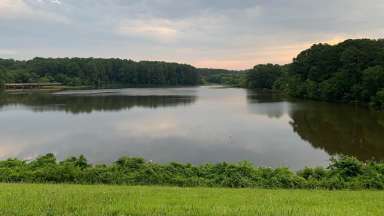Jump To:
Stormwater Retention
You can now use a variety of features to retain or detain stormwater when developing streets and residential lots. The lots must have 24 percent impervious surface area or higher. Before, you could only use wet ponds. The features must reduce water pollution and stormwater volume in the watershed.
Impervious Surface
You're limited in how much impervious surface (hard surfaces like sidewalks, driveways, roofs, etc.) you can add to a developed site. This applies to the secondary water supply watershed protection area.
Impacted Lots
- Built before March 1, 1988 or established outside the subdivision process after this date;
- Connected to both City water and sewer utilities; and
- Have an impervious surface area of 24 percent or higher.
Requirements
You cannot add more impervious surface to a property resulting in “built area” that is more than 30 percent.
What's Built Area?
“Built area” is a new term defined for the text change. It represents developed area on a given lot made up of:
- Impervious surface (concrete, sidewalks, and roofs); and,
- Semi-pervious surface (semi-permeable pavements/pavers and green roofs).
Stormwater Volume
The volume of stormwater runoff leaving the site after development cannot be more than the amount on site before development. This is based on specified rainfall and pre-development land cover.
Design Exceptions
You can submit design exceptions to the City of Raleigh for approval. The exceptions should show that stormwater runoff from the site will be managed using traditional stormwater rate control requirements based on:
- Low infiltration rates of native soils on the site;
- Shallow depth to seasonally high groundwater table on the site; and
- Shallow depth to bedrock on the site.
Green Raleigh Review
Use Green Raleigh Review to add green stormwater features and energy efficient practices to your site plan. This process works with site review, bundled site review, and building plans express commercial review.
